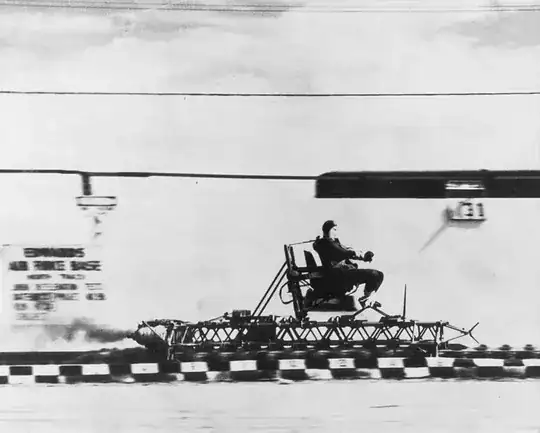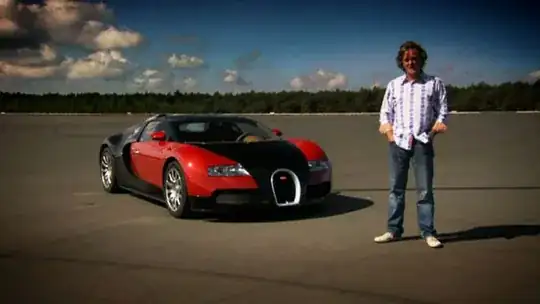Top fuel dragsters currently accelerate from 0 to about 335 MPH (~540 KPH) in 1000 feet (~305 meters), taking about 3.5-4 seconds to do so (giving a little over 5 G's of acceleration). They then decelerate back to 0 in about another 5 seconds or so (around 3 G's of deceleration).
This is fairly impractical though. To do it, the cars use engines that produce around 10,000 horsepower. That puts enough wear and tear on the engine that it's standard practice to completely rebuild the engine every run.
Fighter jets can generate quite a bit more acceleration than that in a tight turn. Most have acceleration limiters, so they won't exceed about 8 G's, and will only maintain that for a very short time, then the jet will automatically "loosen" the turn to keep the pilot from passing out.
In this case, the acceleration as felt by the pilot is normally "downward"--i.e., pushing him/her down in the seat, rather that backward like the acceleration in a dragster. This has a significant effect--since it's pulling "downward", it's more difficult for the heart to pump blood to the brain. This leads to a "grey out" effect, where the brain (and eyes) are receiving little enough blood that vision becomes somewhat impaired.
Even achieving that takes fairly drastic measures--pilots wear "speed pants" to "squeeze" their legs, helping force blood upward instead of pooling in their legs. The "seat" in a modern fighter is also fairly reclined (e.g., around 30 degrees) to make it somewhat easier for the heart to pump blood to the pilot's head.
Getting to your actual question: these are probably close to the limit of what you can expect people to endure on a semi-regular basis. Accidents are often catastrophic, and even in the absence of catastrophic accidents the acceleration and deceleration take a substantial toll on drivers/pilots. A common injury among top fuel drivers is detached retinas. Don Garlits (top fuel driver, now retired) had surgery to fix a detached retina, and has admitted that it was fairly routine that the initial launch left him feeling "woozy" until he reached around the 300 foot mark.
So, getting to your specifications: accelerating at 1.5 G's should be no problem for any reasonably healthy adult. If you double that to 3 G's, there's still little likelihood of its being life threatening (especially given the relatively short track your postulating).
Tripling the acceleration to 4.5 G's gets you into the range where it's still entirely survivable, but you'd want to ensure the investor had a physical quite recently--it's getting to the point that you'd want to ensure that s/he was healthy enough rather than being able to take it for granted just because you didn't know of his/her being particularly unhealthy.


